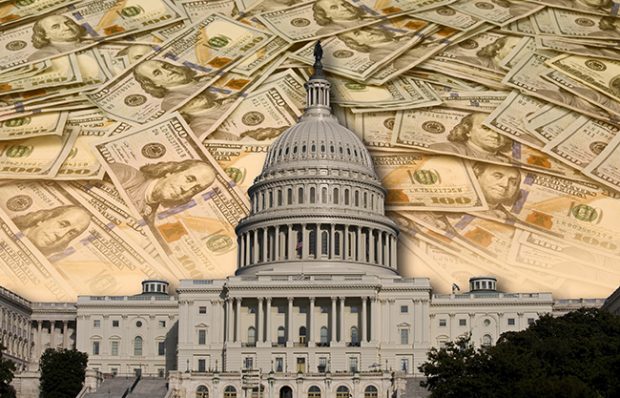 Source: Shutterstock.
Source: Shutterstock.
Credit union earnings will be continue to be depressed over the next two years because of low interest rates and less non-interest income, according to CUNA's latest forecast.
CUNA's economic and credit union forecast released Feb. 12 expects the economy to improve much faster than it forecast in November, but it remains pessimistic about credit union margins.
Recommended For You
CUNA estimates return on average assets (ROA) for the 12 months ending Dec. 31 was 0.65%, down from 0.93% for 2019. And, it is predicting that ROA will fall to 0.50% both in 2021 and 2022. The forecast is a product of collaboration between economists at CUNA and at CUNA Mutual Group, both of Madison, Wis.
Last year's ROA "was propped up by fees from significant sales on mortgages and PPP [Payroll Protection Program] loans," said Jordan van Rijn, CUNA senior economist and the report's author. "Overall, the very low interest rates and falling loan to share ratio means that credit unions will be forced to place funds in low yielding investments, and newly disbursed loans will receive tiny interest margins."
 Jordan van Rijn
Jordan van Rijn However, CUNA has been underestimating credit union earnings. Its current forecast assumes ROA of 0.66% for the fourth quarter of 2020, up from its November forecast of 0.35%.
Callahan & Associates, the credit union company based in Washington, D.C., last week estimated 0.83% ROA for the fourth quarter, up from 0.81% in 2019's fourth quarter and 0.79% in 2020's third quarter.
NCUA call reports for the 10 largest credit unions show their fourth-quarter ROA was 1.01%, up from 0.95% in 2019's fourth quarter and 0.60% in 2020's third quarter.
Data from the Top 10 credit unions and Callahan show the improvement came from a sharp drop in loan loss provisions and higher non-interest income, particularly from mortgage sales. NCUA's full set of fourth-quarter data is expected in early March.
For the broader picture, CUNA forecasts a faster economic recovery this year than it had forecast in November.
Last year, Gross Domestic Product (GDP) fell 3.5%, its worst full-year drop since 1946. The unemployment rate fell from its April peak to 6.3% in January, but the pace of recovery slowed significantly over the past few months.
Yet CUNA cited signs of hope in falling COVID-19 cases, rising vaccinations and President Biden's plan for an additional $1.9 trillion stimulus package that includes expanded unemployment benefits, support for schools and hospitals, and additional direct payments to households.
"For credit unions, the additional stimulus will dramatically increase savings growth and help maintain relatively healthy portfolio quality, and the recovery and low interest rates will support modest loan and membership growth," van Rijn said. "However, low interest rates will squeeze earnings and the loan to share and net worth ratios will continue to fall."
Van Rijn said the most significant changes from its previous November forecast include:
- The economy will grow 3.5% in 2021, up from its previous forecast of 2.5%.
- Consumer Price Index inflation will rise 2.1% in 2021, up from its previous estimate of 1.2%.
- The unemployment rate will fall to 5.5% by year's end, down from its previous forecast of 7%.
- Savings will grow 15% this year, up from its previous 8% forecast, and assets will grow 13.5%, up from its previous 7% estimate. Both revisions are based on the additional stimulus expected this year.
- Credit union portfolio quality is expected to be better than previously anticipated. Delinquency rates will rise only slightly to 0.80% in 2021, down from its previous estimate of 1.10%. Net charge offs will rise to 0.60%, down from its previous forecast of 0.80%.
CUNA's forecast assumes vaccinations will reach roughly half of the population by the summer, the U.S. will approach herd immunity during the second half of the year, and, "given Democratic control of Congress," Biden will be able to sign a stimulus plan roughly equal to the one proposed in March or April.
Credit unions can expect continued sluggish growth in loans, and fast growth in savings. As a result, the loan-to-share ratio will fall from 73.6% as of Dec. 31 to 65.6% by the end of this year and 64.4% by the end of 2022.
Total loans were $1.9 trillion as of Dec. 31, up 5% from a year earlier, largely on the strength of mortgages and PPP loans. CUNA expects portfolios will grow another 5% this year and 8% in 2022.
"We expect auto lending to recover and mortgage lending to remain strong," van Rijn said. "However, headwinds to faster growth include fewer PPP loans and households using stimulus funds and mortgage refinancing to pay down existing debt, such as credit cards."
Savings grew 20.6% to $1.62 trillion last year. "Stimulus will continue the strong deposit growth at credit unions and CUNA economists anticipate savings growth of 15% for 2021 mostly concentrated in the first and second quarters before falling to 5% in 2022," he said.
© 2025 ALM Global, LLC, All Rights Reserved. Request academic re-use from www.copyright.com. All other uses, submit a request to [email protected]. For more information visit Asset & Logo Licensing.






